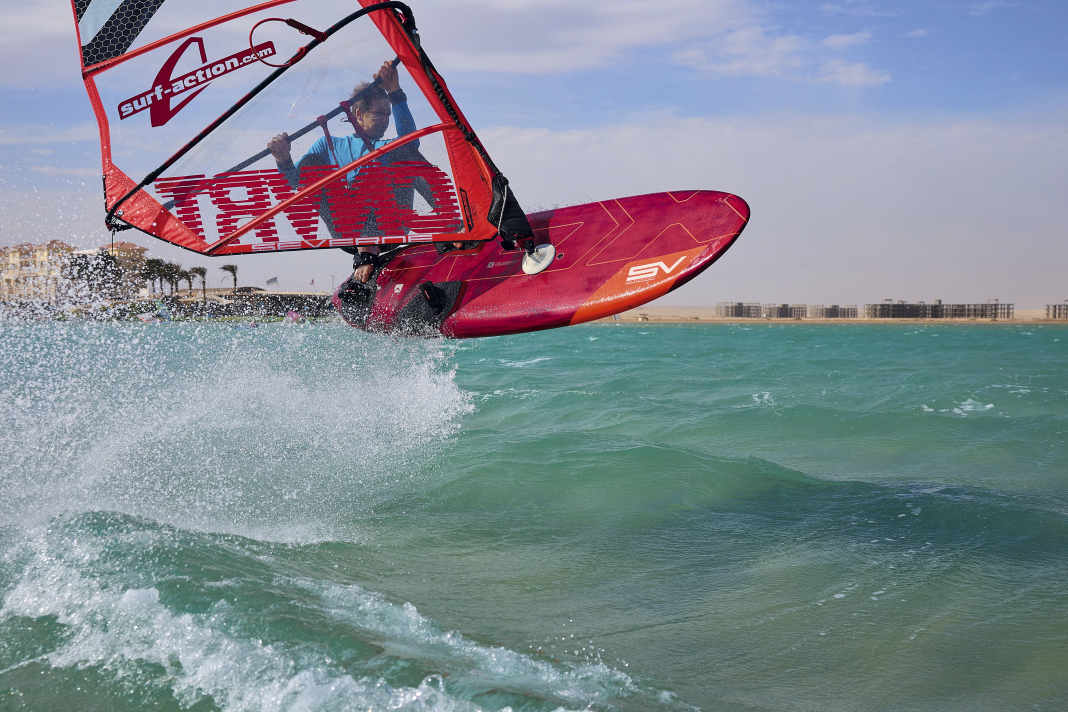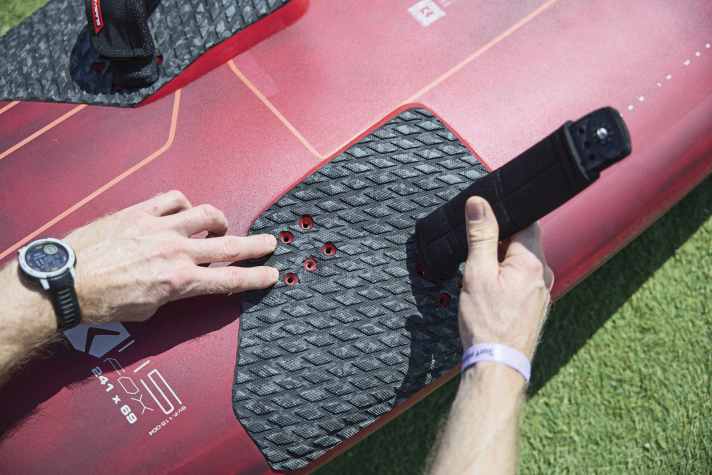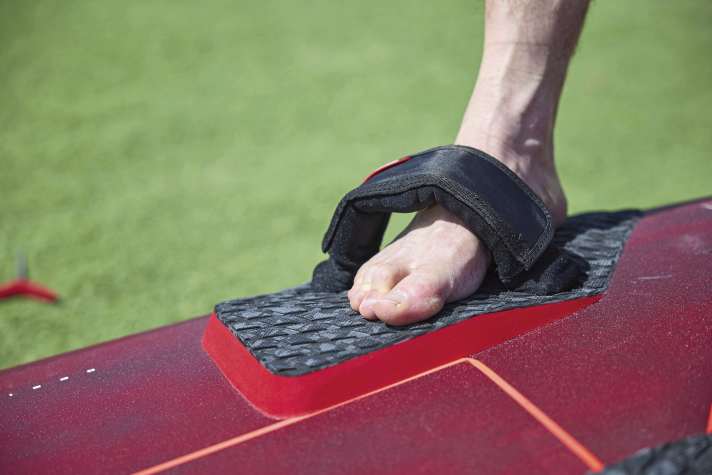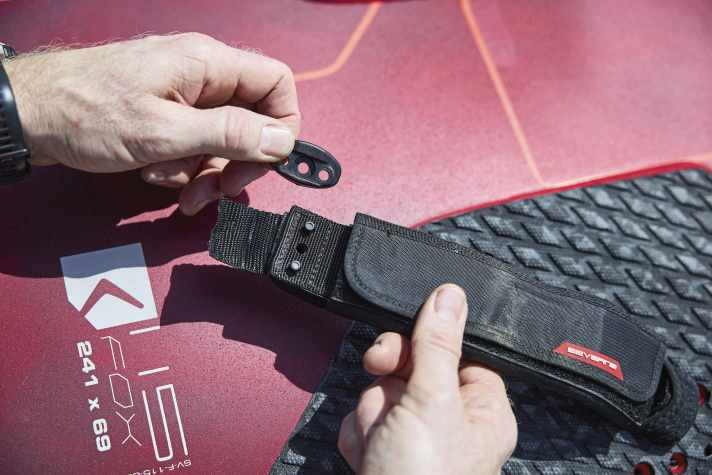





Straps are the link between surfer and board. Whether you're just learning to ride straps, you're already peppering through power jibes at full throttle or you're whirling through the air with a freestyler - the right strap setup is crucial for getting a good grip and avoiding injuries. The adjustment options go far beyond the familiar bigger-smaller adjustments. We give you the most important answers about strap set-up here.
Inside or outside position?

Boards for special areas of use, such as wave, freestyle or slalom, are united by the fact that they only offer a single option. On wave and freestyle boards, this is located far inwards, while on performance-orientated slalom boards, the plug row is located far out towards the edge of the board. Board classes such as freeride, freestyle wave or freemove, on the other hand, offer the option of screwing the straps either on the inside or closer to the edge. As a general rule, beginners to planing surfing should always mount the straps on the inside, as this makes it easier to get into the straps and apply pressure to the leeward edge during planing manoeuvres. Mounted further out, the performance potential of the boards (top speed, control) can be better utilised - provided you have the appropriate riding skills.
Front or rear foot straps?
Each plug series offers between three and five holes, allowing straps to be mounted further forwards or backwards. But what makes sense? Based on our test experience, the middle positions are the normal case, which is suitable for most body sizes (1.70 to 1.90 metres) and areas of use. Based on this, however, it can make sense to move the straps in certain cases - here are some tips:
Adjust the stance If you are very tall/small, a corresponding crotch width can be helpful. For example, if you screw the front straps further back and the back straps forwards, the stance will be narrower - and vice versa. If you measure under 1.65 metres or over 1.95 metres, you should use this option. Under certain circumstances, it may also make sense to move all straps forwards or backwards, for example to fundamentally change the riding characteristics of the board.
If you mount all straps in the front plugs, there will be more pressure at the front when planing and manoeuvring. So if you constantly have the problem that your board rises uncontrollably ("wheelie") or hops too much on the edge in manoeuvres, moving the straps forward can help. Important: However, moving the straps should be the last measure - changes to the sail trim (flatter), mast foot position (further forward) and boom height (lower) are more effective and, above all, can be implemented more quickly.
Conversely, moving all straps backwards can make sense if the board sticks too much and does not glide freely over the chops. The same applies here: before you move the straps, you should first try to solve the problem by adjusting the sail trim (more bulbous), mast foot position (further back), fin configuration (larger) or boom height (higher).
The right loop size
There is no such thing as THE right size, the requirements of the disciplines are too different. Freestylers and wave surfers want to stand well above the centre of the board in order to be able to exert pressure on the edges - the straps are then often set so large that you slide through to the instep. At the other end of the scale, slalom racers are looking for particularly direct contact with the board, with only their toes peeking through.

Many people don't realise that the loop size should also be adjusted laterally."
Most windsurfers only adjust the strap size using the Velcro fastener. This adjustment only regulates how much pressure is applied to the foot from above. Especially with small feet and bare feet, the adjustment reaches its limit, as in extreme cases it can lead to the foot not holding in the strap, However, this can result in painful chafing on the top of the foot. In addition, certain disciplines (wave, freestyle) require you to slide far into the straps and still get enough support. For such cases - or if you are a "bigfoot" travelling with thick winter boots - adjusting the width of the side strap is a good tip. This can be done in two ways:
- Turn the mounting plate: With almost all manufacturers, the screw is in an asymmetrical mounting part made of metal or plastic. This has a narrow and a wide side. If you carefully loosen the small plate with a screwdriver and turn it over, you can change the loop width by up to two centimetres.
- Use "foreign" plugs: If turning the mounting plate is not enough to adjust the width, you can also use non-matching plugs. This allows straps to be adjusted by one to two centimetres in width. The fact that the angle of the straps then changes slightly is something you can usually get over.

Be careful not to screw too tight!
With loop mounting, you screw a self-tapping screw into a plastic plug. If you overtighten the screw with a cordless screwdriver or screw the screw in and out too often, sooner or later the plug will crumble. Therefore, only tighten the screws so much that the straps can no longer be twisted on the pad!

